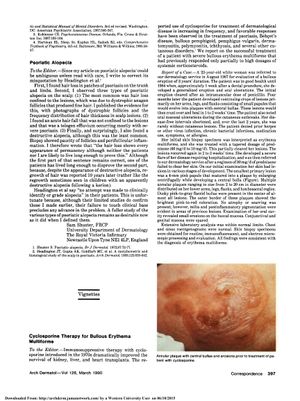Psoriatic Alopecia: Clarification and Critique
March 1990
in “
Archives of Dermatology
”

TLDR Sam Shuster identified three types of hair loss in psoriasis and emphasized the need for better research to understand them.
In a letter to the editor, Sam Shuster clarifies his findings on psoriatic alopecia, correcting a misquotation by Headington et al. Shuster had identified three types of hair loss associated with psoriasis: (1) hair loss confined to psoriasis lesions due to dystrophic anagen follicles, (2) an acute telogen effluvium not confined to lesions, mostly in severe psoriasis, and (3) a less common destructive alopecia with a paucity of follicles and perifollicular inflammation, which surprisingly showed potential for regrowth after 10 years, contrary to initial beliefs of permanency. Shuster criticizes Headington et al. for not clinically identifying or grading alopecia in their patients, which he believes limits progress in understanding psoriatic alopecia. He emphasizes the need for a more comprehensive study of the condition.




